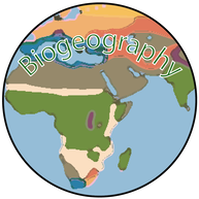
Biogeography, the study of the geographic distribution of plants, animals, and other forms of life. It is concerned not only with habitation patterns but also with the factors responsible for variations in distribution.
Biogeographic studies divide Earth’s surface—primarily the continents and islands—into regions exhibiting differences in the average composition of flora and fauna. It is thought that the present-day distribution patterns of plant and animal forms, as reflected in such biogeographic regions, are the result of many historical and current causes. These causes include present climatic and geographic conditions, the geologic history of the landmasses and their climates, and the evolution of the taxon (e.g., genus or species) involved.
Biogeography provides evidence of evolution through the comparison of similar species with minor differences that originated due to adaptations to their respective environments. Over time, the Earth’s continents have separated, drifted apart, and collided, resulting in the creation of novel climates and habitats. As species adapted to these conditions, members of the same species that had been separated geographically diverge, resulting in the eventual formation of distinct species. This knowledge is important, as by understanding how adaptations occurred in response to changing environments in the past, we can apply this knowledge to the future.
Credit : Britannica
Picture Credit : Google




